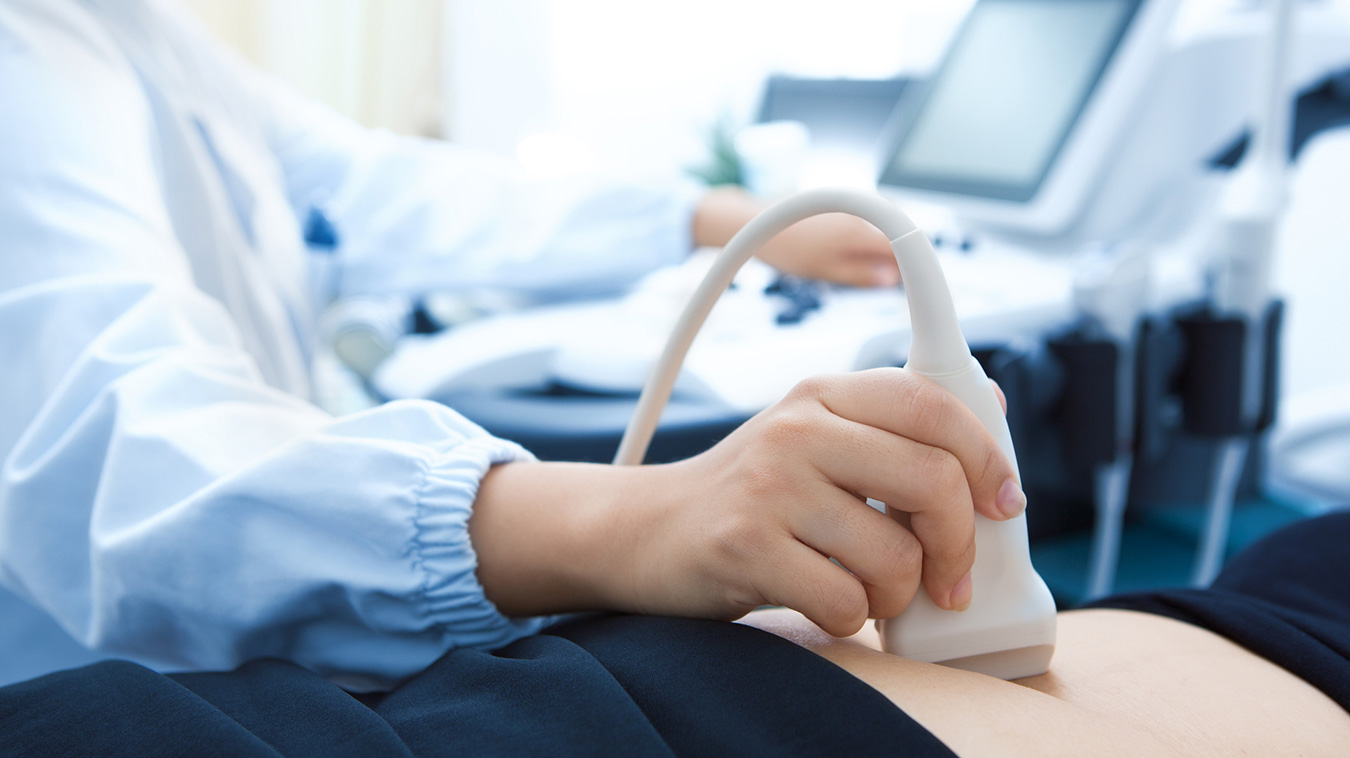
Home WHY WOULD I NEED AN ABDOMINAL ULTRASOUND?
Ultrasound imaging is most often associated with pregnancy, but it has a wide variety of uses. It may be ordered to investigate pain, swelling, or other symptoms, and can be the first step in determining the cause for symptoms affecting the soft tissues of the body.
One of the most commonly requested ultrasound exams is the abdominal ultrasound. This exam assesses the aorta, liver, pancreas, gallbladder, kidneys, and spleen. Multiple still images are taken to represent the location, texture, and blood flow of each organ.
Your doctor might order this exam for a number of reasons:
Also known as sonography, ultrasound imaging involves the use of high-frequency, real-time sound waves to create an image. Sound waves are transmitted into the body through a small transducer (probe). These waves travel into the area being examined until they hit a boundary between tissues, such as between fluid and soft tissue, or soft tissue and bone.
Since sound waves travel different distances before they are reflected back to the transducer, depending on the boundary they run into, a computer can interpret this information as a two-dimensional image on a screen.
The shape and intensity of the echoes depend on whether the area absorbs or transmits the sound waves. For example, most waves pass through a fluid-filled cyst and send back very few or faint echoes, which look black on the display screen. On the other hand, waves will bounce off a solid tumor or kidney stone, creating a pattern of echoes that the computer will interpret as a lighter-colored image. Air and bone also reflect sound waves.
Ultrasound helps health care practitioners make a diagnosis and inform care decisions. Once your doctor has identified the need for an ultrasound, your doctor’s office may book an appointment for you, or provide you with a number to call to book your appointment. You will also be given a requisition form and preparation instructions for your exam.
For an abdominal ultrasound, you will be asked to fast and have nothing to eat or drink (except water) for six hours prior to your exam. It generally takes between 20-30 minutes to complete this exam.
Once in the exam room you may be asked to change into a gown. You will then be positioned by one of our compassionate and experienced sonographers. A warm, unscented, hypo-allergenic, water-based ultrasound gel will be applied to your abdomen, and your sonographer will move the transducer around the front and side of your abdomen and ribcage to gather images of your organs.
You may be asked to hold your breath and change position to help better examine the area of concern. You may experience mild to moderate pressure while the sonographer takes the images.
Your images will be reviewed by a specialized radiologist who will compile a report that is sent to your doctor within 24 hours, sooner for urgent requests. Mayfair Diagnostics is owned and operated by over 50 radiologists who are fellowship-trained in many key areas, such as neuroradiology, body, cardiac, musculoskeletal, etc. This allows for an expert review of your imaging by the applicably trained radiologist.
Your images will be uploaded to a provincial picture archiving and communication system (PACS) – this technology provides electronic storage and convenient access to your medical images from multiple sources, such as your doctor, specialists, hospitals, and walk-in clinics.
Your doctor will review your images and the report from the radiologist and discuss next steps with you, such as a treatment plan or the need for further diagnostic imaging or lab tests to ensure an accurate diagnosis.
Mayfair Diagnostics has 13 locations across Calgary, one in Cochrane, and one in Regina, which provide ultrasound services. For more information, please visit our services page.
REFERENCES
Kandola, A. (2019) “What can we see with an abdominal ultrasound?” www.medicalnewstoday.com. Accessed July 27, 2022.
Mayo Clinic Staff (2022) “Abdominal ultrasound.” www.mayoclinic.org. Accessed June 27, 2022.
Radiological Society of North America (2022) “General Ultrasound.” www.radiologyinfo.org. Accessed July 27, 2022.
© 2024 Mayfair. All rights reserved.
| Cookie | Duration | Description |
|---|---|---|
| cookielawinfo-checkbox-analytics | 11 months | This cookie is set by GDPR Cookie Consent plugin. The cookie is used to store the user consent for the cookies in the category "Analytics". |
| cookielawinfo-checkbox-functional | 11 months | The cookie is set by GDPR cookie consent to record the user consent for the cookies in the category "Functional". |
| cookielawinfo-checkbox-necessary | 11 months | This cookie is set by GDPR Cookie Consent plugin. The cookies is used to store the user consent for the cookies in the category "Necessary". |
| cookielawinfo-checkbox-others | 11 months | This cookie is set by GDPR Cookie Consent plugin. The cookie is used to store the user consent for the cookies in the category "Other. |
| cookielawinfo-checkbox-performance | 11 months | This cookie is set by GDPR Cookie Consent plugin. The cookie is used to store the user consent for the cookies in the category "Performance". |
| viewed_cookie_policy | 11 months | The cookie is set by the GDPR Cookie Consent plugin and is used to store whether or not user has consented to the use of cookies. It does not store any personal data. |